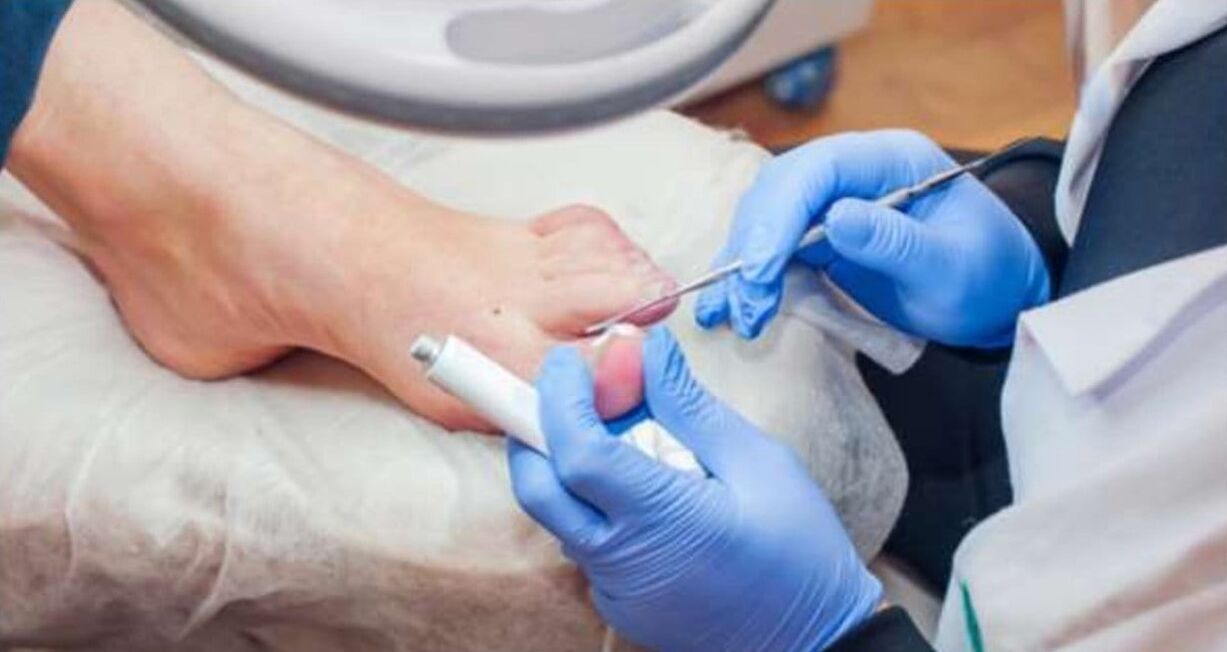Fungal diseases of nails and feet are common.

the reason
Doctors divide the fungal diseases of the feet and nails into two categories. The first category refers to the disease called epidermal tinea caused by the fungus Rhodophyton, and the second category is erythrasma, which occurs when the fungus Rhodophyton multiplies. These fungi can affect the nail plate and interdigital folds, the soles of the feet and the back of the feet.
Factors that cause fungal infections:
- Interdigital cracks, cracks, abrasions caused by sweating or dry skin, abrasion, poor dryness after water injection, narrow space between fingers, flat feet, wearing tight shoes, etc. ;
- Vascular diseases, frostbite of limbs, standing work, varicose veins, decreased immunity, endocrine diseases, stress;
- Professional factors-working in mining companies, metallurgy and chemical industries. Fungus on nails and feet usually affect military personnel and athletes, which is also due to the particularity of their profession.
The disease can be spread through close contact with the patient or through objects he uses. From a pollution perspective, bathrooms, swimming pools and other public places with high humidity are "dangerous". There, ideal "greenhouse" conditions were created for the fungus: heat and moisture. In addition, the nail plate is almost entirely composed of keratin, which is an excellent breeding ground for fungi.
Once inside the nail plate, the fungus will grow and reproduce very slowly. It gradually dissolves the nails, replaces them, and spreads to the surrounding skin.
what happened?
With fungal infections of the skin of the feet, the process usually starts with the folding of the fingers. Cracks and peeling will form in these places. After that, the skin began to become red and itchy. This process usually reaches the instep, sole, and sole of the toes. Other clinical forms of fungal infections are also possible.
Nail fungus manifests as follows:
- Nail color: white, yellow, brown, black. The nails are blunt and opaque.
- Nail surface: uneven and rough. The nails are shattering.
- Thickness of nails: thickening or thinning/delamination.
- Nail shape: deformed.
- Nail crease: No change or inflammation.
Obvious deformation and thickening of nails will bring certain difficulties when cutting. In addition, in many cases, the pressure of the deformed thick nail on the underlying tissue (nail bed) and the pressure of the shoe on the nail can cause pain.
Diagnosis and treatment
The diagnosis and treatment of fungal diseases are carried out by a dermatologist. The doctor will first send you a scratch-determine the type of fungus and prescribe the necessary treatment. In addition, certain drugs are prescribed based on the general condition of the patient and whether there are other diseases. Therefore, self-medication is ineffective and sometimes even aggravates the course of the disease.
The main danger of foot fungal infection is that the disease will continue to develop. If the fungus is not treated, starting from one nail, the fungus will spread to other nails, and then spread to the skin or nearby areas of the nails. In rare cases, internal organs may even be damaged.
In addition, the causative agent of this disease is a very strong allergen, which can rebuild the body's sensitivity and cause various allergic reactions.
Many patients like to use the widely advertised antifungal varnishes and ointments. It should be remembered that the antifungal varnish only works in the early stages of the disease and does not affect the entire thickness of the nail-in many cases, it is necessary to take the drug (tablet) internally. In addition, some creams only work on the skin and do not penetrate the nails. These funds are mainly used for prevention.
Sometimes people do not go to the doctor because they fear that the nail plate will be completely removed. This will not happen because the delete method is no longer used. Currently, powerful antifungal drugs are used, and if used correctly, the fungus can be completely eliminated.
During and after the treatment of fungal infections, it is important to disinfect everything that comes in contact with the fungus. The floors, walls, bathrooms, showers, bathroom inventory and the patient’s personal belongings (linen, shoes, skin and nail care products) should be disinfected.
You can reduce the risk of fungal infections by following the suggestions below:
- Use a separate towel;
- Wear personal indoor shoes;
- Take a shower after the swimming pool;
- Do not wear slippers when visiting;
- Don't try on barefoot shoes in the store.
























